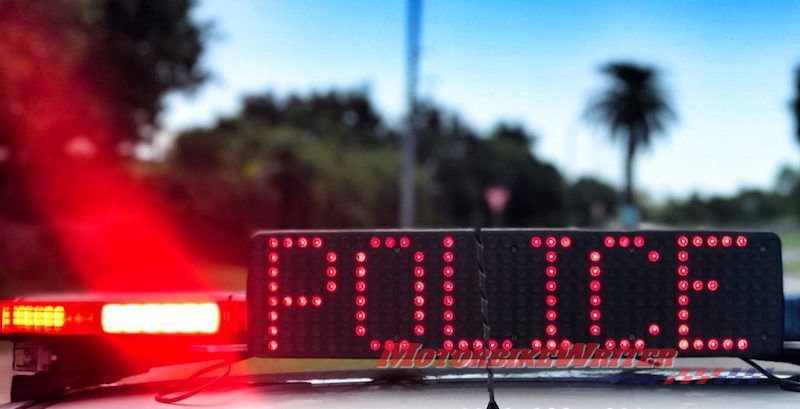Police pursuits are again being questioned after an American police officer was sacked last week for shooting a motorcycle rider in 2016 following a high-speed chase.
Officer Brian Trainer shot Terrence Sterling, 31, twice but did not turn on his body camera until after the shooting in a show of police abusing their power.
The recent D.C. police trial board heard a lot of conflicting evidence, but it seems the rider stopped briefly at a red light, then sped off.
Trainer allegedly ignored commands to stop the chase and at the trial he was unable to recite police pursuit policies.

After a chase at up to 160km/h (100mph) through city streets, the officer pulled over the rider and within moments Sterling was shot twice.
Police allege the rider rammed the police car door. He was later found to have a 0.16 blood alcohol content which is twice the legal limit in that jurisdiction.
While penalties are high for speeding and drink driving, they do not include roadside execution!
Trainer, who did not face any criminal charges, can appeal his sacking.
Police pursuits
A leading police study has found the three most pressing issues for police reform around the world are use of force, policing of violence in families and high-speed pursuits.
A 2009 Australian Institute of Criminology study found deaths in custody at police stations are declining but “deaths in custody” as a result of high-speed pursuits were rising.
While less than 1% of police pursuits results in a fatal crash, 38% of the people killed are innocent bystanders.
It’s much worse in the USA where one person dies every day as a result of a police pursuit. Of those deaths, 1% are police, 55% suspects and 44% bystanders.
Most police procedures acknowledge the judgement of the officer at the scene to begin a pursuit.
However, continuation of the pursuit is then deferred to a senior officer at the station or headquarters.
They have to make a quick judgement based on the lethal risk to the community of the chase versus the lethal risk to the community of letting a serious offender escape.
This must be backed by information, not just mere suspicion.
Queensland police figures show only about 3% of pursuits involved imminent threat to life or a suspect escaping after a homicide.
Police have a duty to not only prevent and control crime, but more importantly, they have a duty to protect the community and that includes from their own reckless behaviour and judgement.



Restrictive practices
Despite criticism from police unions, most pursuit policies around the world, including the USA, are becoming more restrictive.
In many jurisdictions, pursuits are only allowed if there is a serious risk to public safety or in relation to a major crime involving death or injury.
However, there is an issue about making these pursuit policies public. Some say they should be public to show transparency while others believe it would give criminals clues on how to evade police.
Those who support pursuits point out that the number of people evading police is rising as a result of more restrictive pursuit policies, despite higher penalties for evading police.
Making the issue more complex is the degree of the pursuit.
Should there be an upper speed limit for police? Should police be allowed to break other road rules in the pursuit?
There have been incidences of police driving at more than 200km/h in a pursuit and on the road side of a major highway.
Another issue is whether police should be criminally culpable in the instance of a death resulting from a pursuit.
To a degree, technologies such as CTV and number plate recognition cameras, negate the need for pursuits, anyway.



